Lidar Image - Full Route
A very direct route to nowhere - well not really nowhere it is just we cannot figure out quite where its destination was. See later for some suggestions. |
|
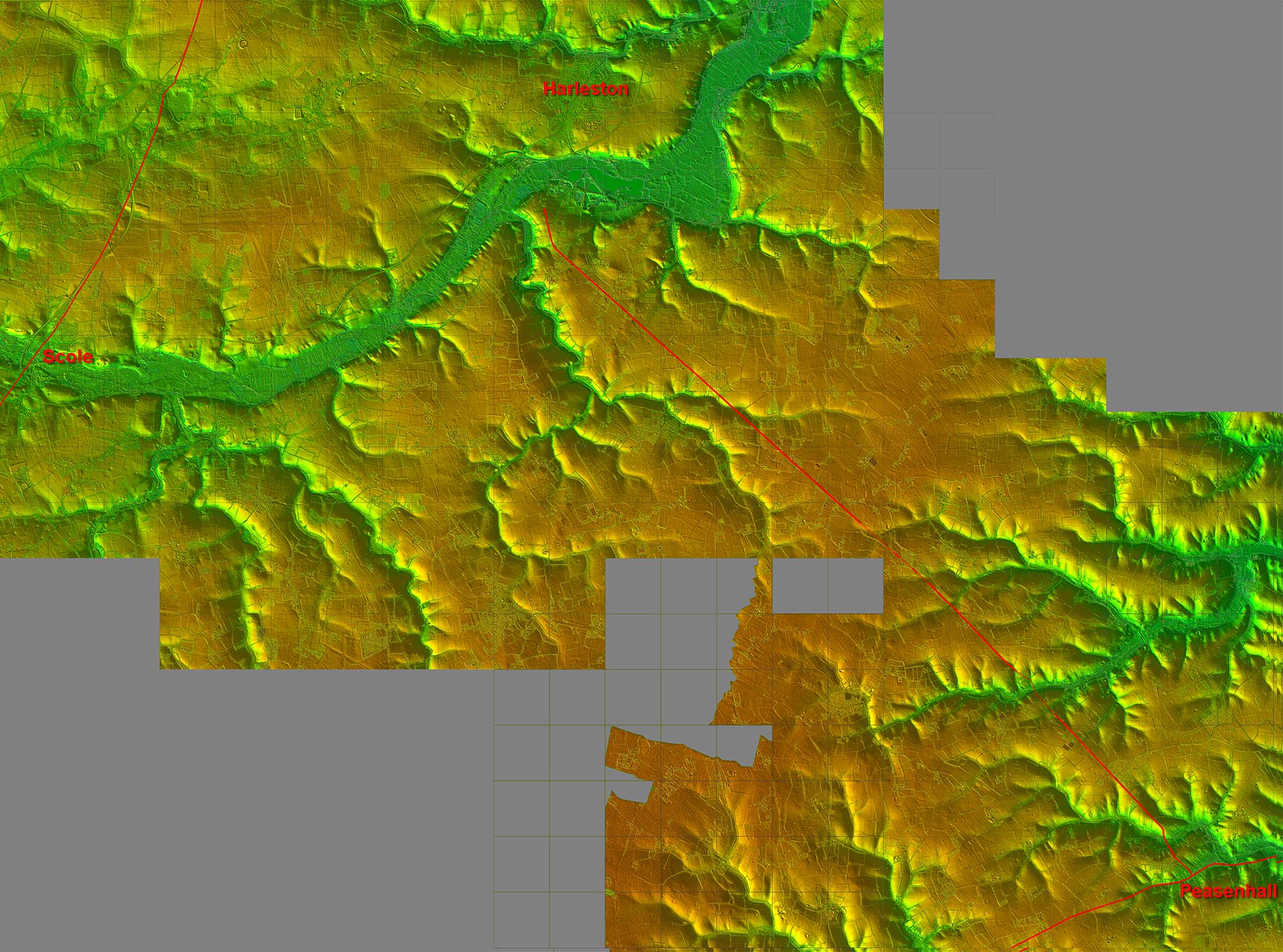 |
Peasenhall Junction
Our road almost certainly headed up Mill Hill between the yellow and white houses. The Roman road from Coddenham crosses left to right heading to.... another mystery.
Image: Google Earth |
Click for larger view |
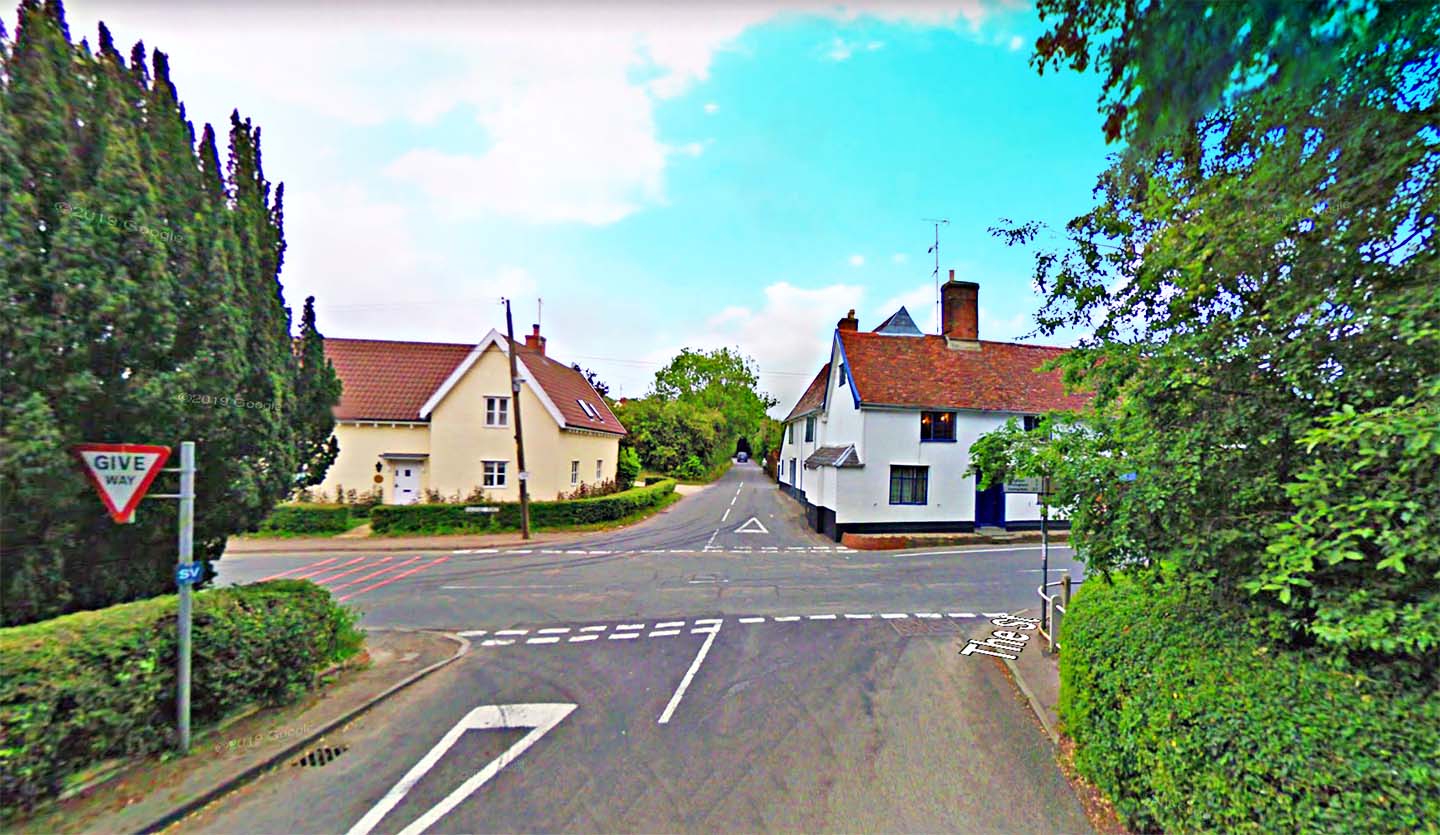 |
Oblique 3D Lidar Image - Peasenhall
The climb up Mill Hill necessitated a somewhat indirect route but once on high ground then the long main straight alignment begins. |
Click for larger view |
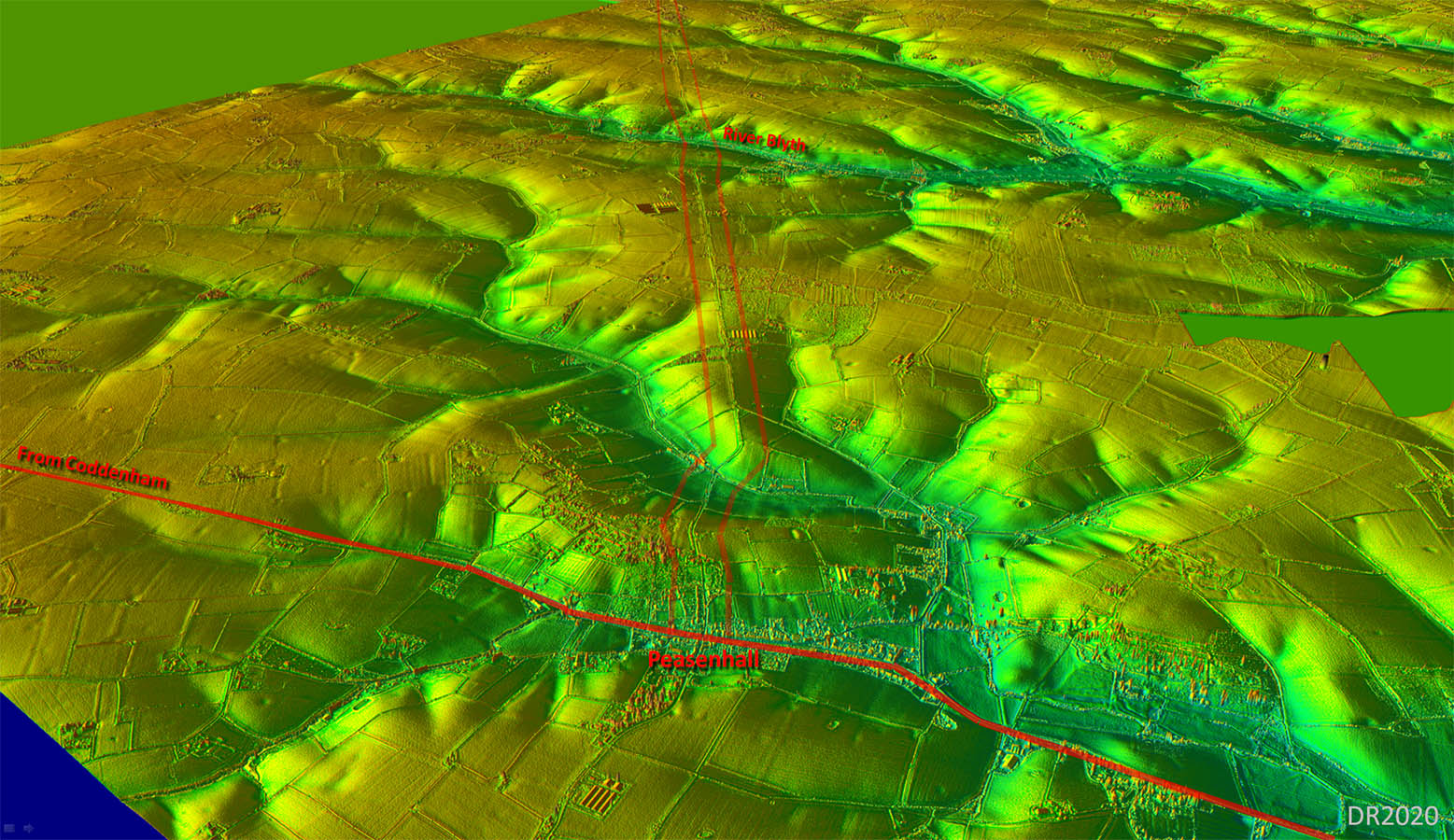 |
Lidar Image and Route Map 1
There was a bit of a wobble off straight to negotiate the valley of the River Blyth but apart from that little deviation of straight. |
Click for larger view |
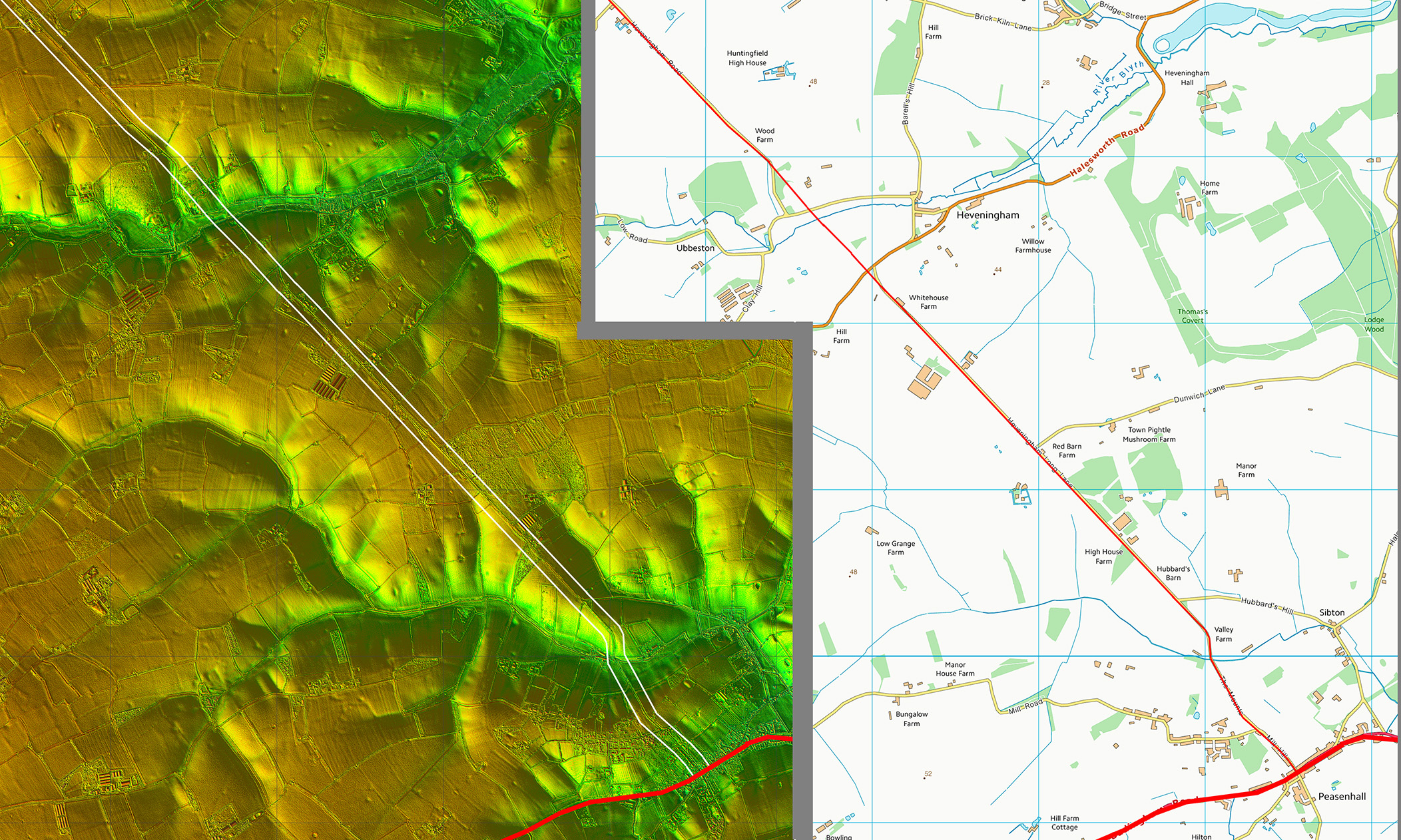 |
Heveningham Long Lane
Having climbed up Mill Hill our road takes on its straight alignment along Long Lane.
Image: Google Earth |
Click for larger view |
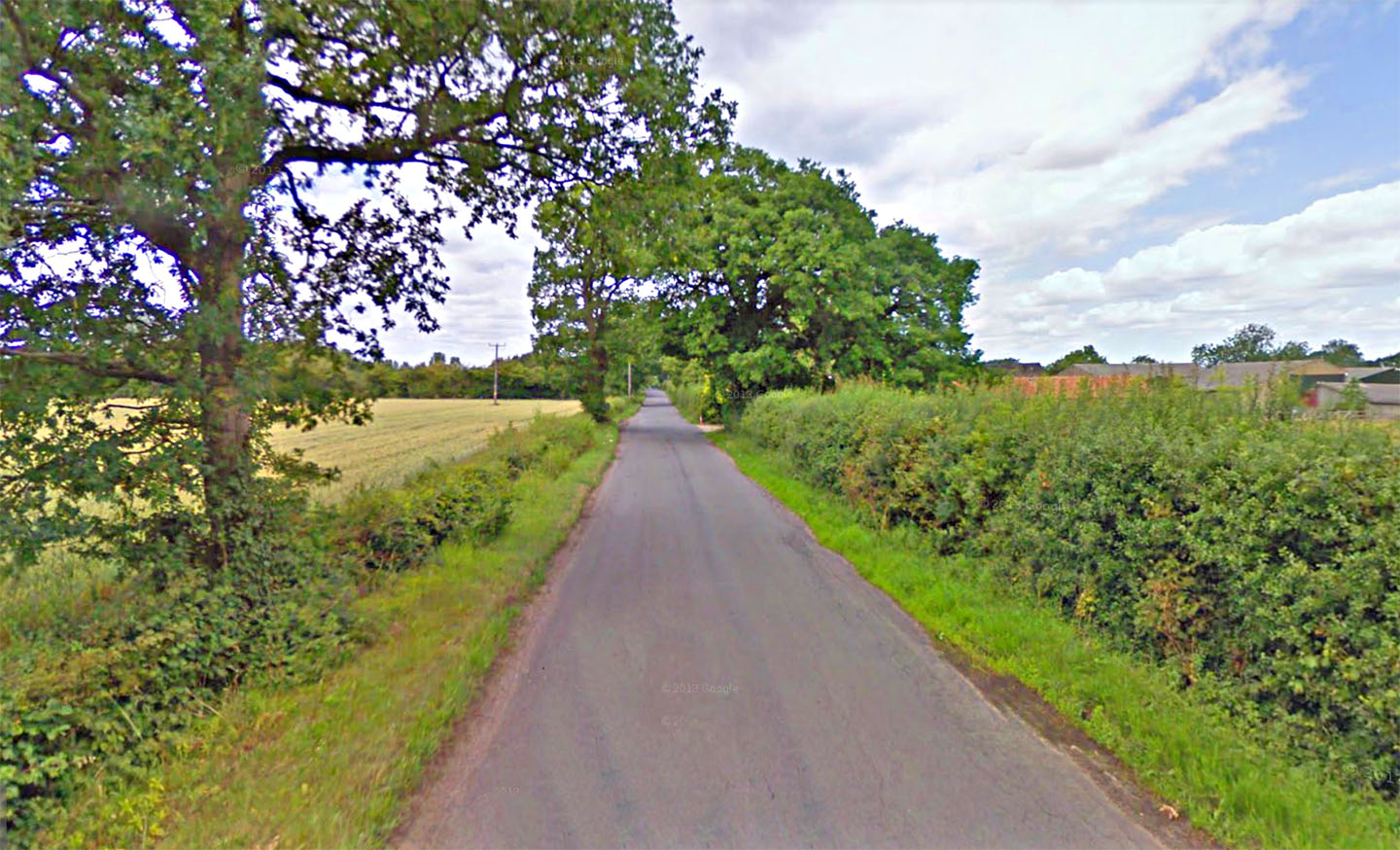 |
Lidar Image and Route Map 2
More of the same - unerringly straight. |
Click for larger view |
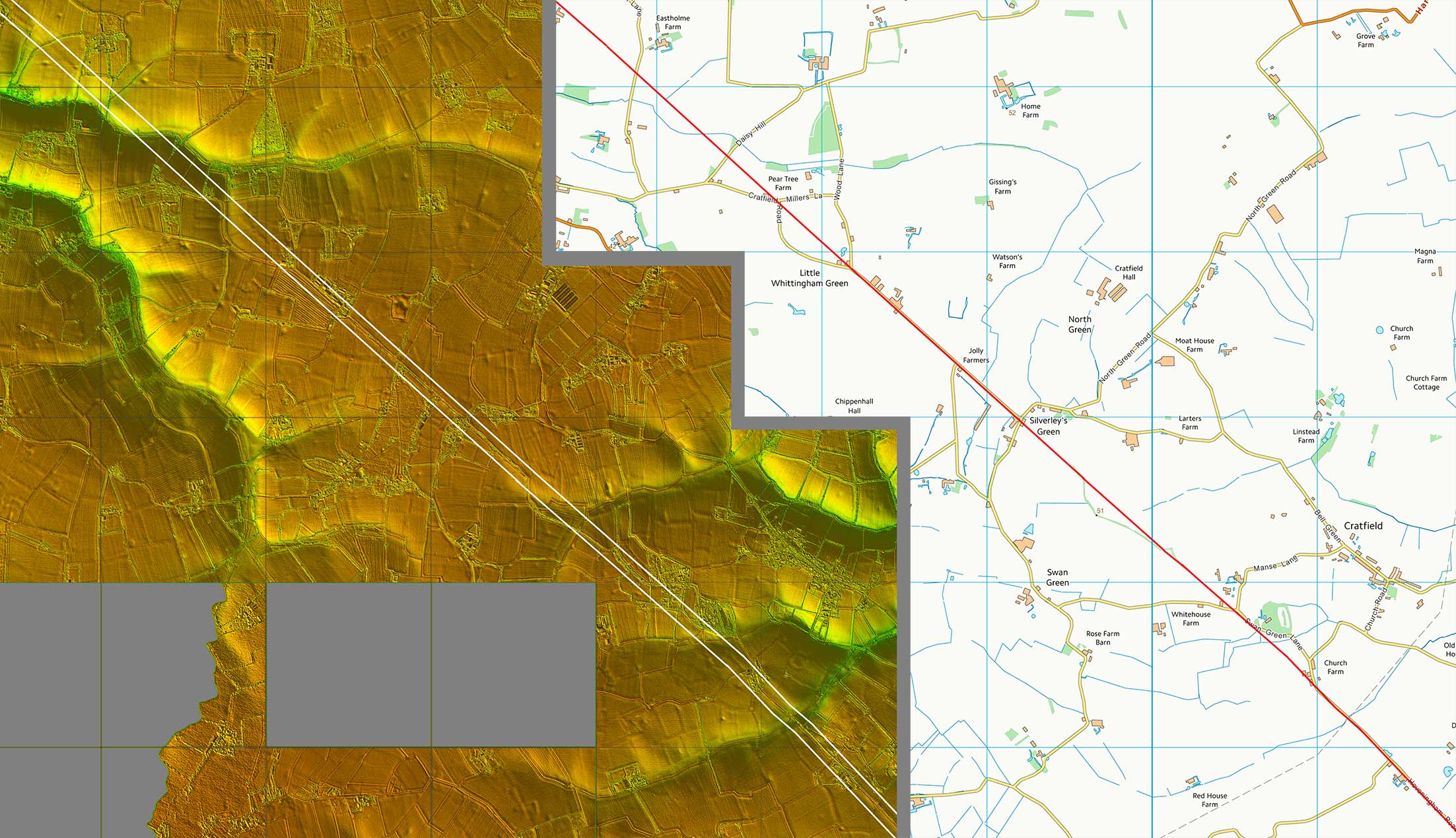 |
Oblique 3D Lidar Image -Silverley's Green
Roman roads don't get much more obvious than this! But how can such an obvious road disappear after the River Waveney? |
Click for larger view |
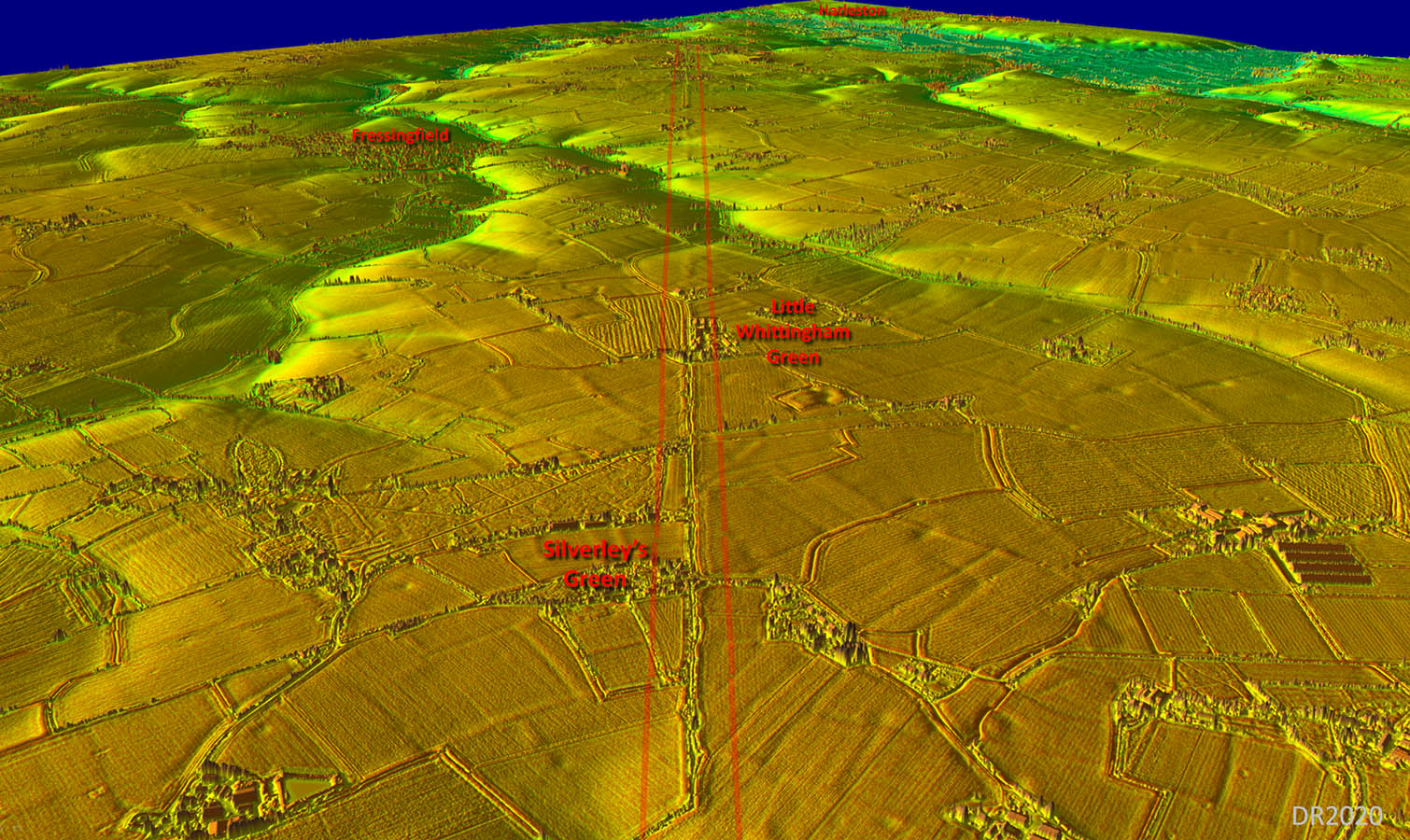 |
Roman Road, Little Whittingham Green, Fressingfield
Aptly named Roman Road at Whittingham Green.
Image: Google Earth |
Click for larger view |
 |
Lidar Image and Route Map 3
The straight alignment ends at Weybread and there is some evidence that it probably turned to the north for a crossing of the River Waveney. But this is where the obvious signs of this road end. Once we have crossed the river we are in Norfolk. |
Click for larger view |
 |
Lidar Image and Map - Needham Connection
There were Roman kilns at Needham and some Roman finds indicating a possible small settlement. There is some evidence for the road heading down to cross the Wensum at Needham.
Even if this is the road its onward continuation is still not resolved. More work needed for Needham. |
Click for larger view |
 |












